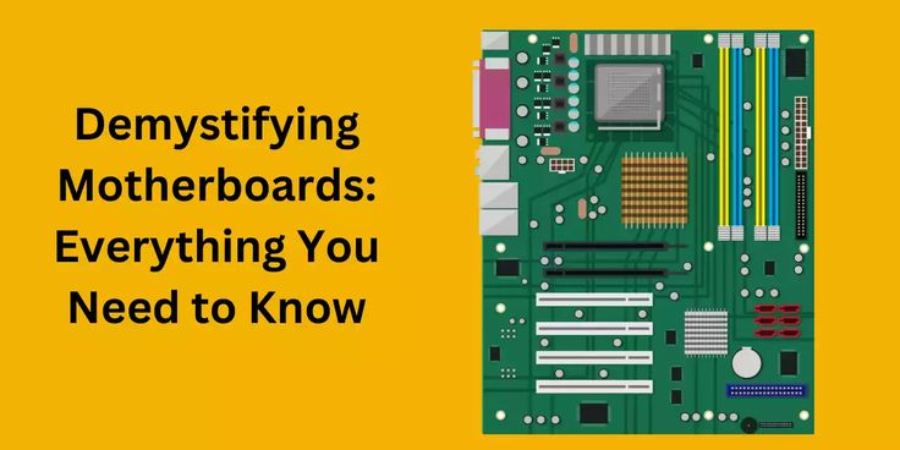

A motherboard is the central component of a computer that connects various hardware components, allowing them to communicate and work together seamlessly. Understanding the structure of a motherboard is essential for anyone interested in computer hardware. In this we'll explore the basic structure of a motherboard :
1. Introduction to Motherboards :
A motherboard is the main circuit board of a computer that connects all the components together. It's like the central nervous system of the computer, coordinating communication between the CPU, memory, storage, and other peripherals.
2. Form Factor :
Motherboards come in different sizes and shapes, known as form factors. Common form factors include ATX, Micro-ATX, and Mini-ITX. The form factor determines the size and layout of the motherboard, as well as the compatibility with computer cases.
3. Components of a Motherboard :
The CPU socket is where the processor (CPU) is installed. It provides the electrical connections for the CPU to communicate with other components.
Memory slots, typically DIMM slots, hold the system memory (RAM). They allow the CPU to access data quickly for processing.
Expansion slots, such as PCI Express (PCIe) slots, allow you to install additional components like graphics cards, sound cards, or network adapters.
The chipset is a set of chips on the motherboard that controls communication between the CPU, memory, storage devices, and peripherals.
Storage connectors, such as SATA and M.2 connectors, provide connections for hard drives, solid-state drives (SSDs), and other storage devices.
Power connectors, including the main ATX power connector and CPU power connector, supply electricity to the motherboard and components.
I/O ports, located on the rear I/O panel, allow you to connect external devices such as monitors, keyboards, mice, USB devices, and networking cables.
The BIOS (Basic Input/Output System) or UEFI (Unified Extensible Firmware Interface) is firmware stored on the motherboard that initializes hardware components during boot-up and provides system configuration options.
4. Functionality of Motherboards :
The motherboard's primary function is to facilitate communication and data transfer between components. It acts as a central hub, routing data between the CPU, memory, storage, and peripherals.
It provides power distribution, regulating voltage levels to ensure stable operation of components.
The motherboard contains a BIOS or UEFI firmware that controls the boot process and allows users to configure hardware settings.
It supports expansion and customization by providing slots and connectors for additional components like graphics cards, sound cards, and storage devices.
Modern motherboards may include features such as built-in Wi-Fi, Bluetooth, and RGB lighting for added functionality and aesthetics.
5. Importance of Motherboards :
The motherboard is crucial for the functioning of a computer, as it determines compatibility and performance.
It provides the foundation for building and upgrading a computer system, allowing users to customize their setup according to their needs and preferences.
A well-designed motherboard can enhance system stability, performance, and efficiency, contributing to a smoother computing experience.


